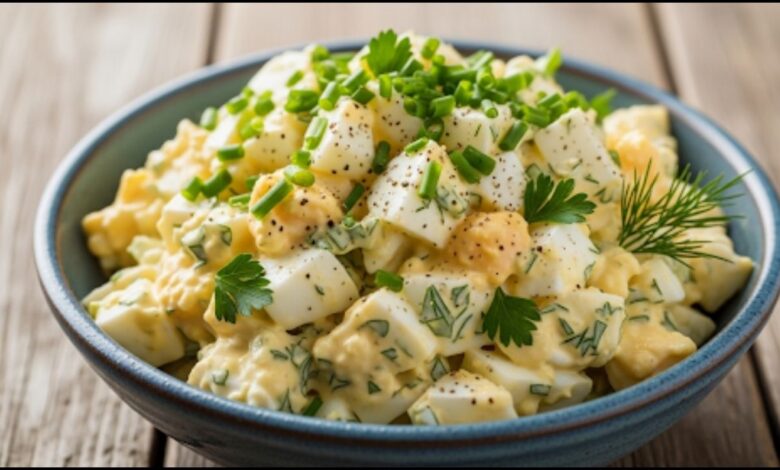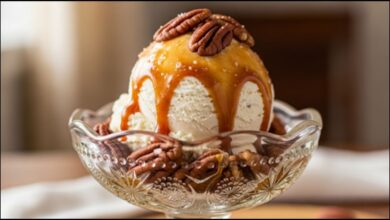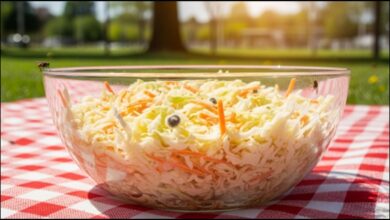Why a Chef’s Secret for the Best Egg Salad Isn’t a Secret Anymore
A chef's secret for the best egg salad lies in precise culinary techniques. Rather than a secret ingredient, mastering the hard-boiled egg's texture and balancing the salad's flavor with acidity and fresh herbs are key. These professional methods transform a simple dish into a rich, complex culinary experience.

For decades, the seemingly simple egg salad has been a staple of home kitchens and delicatessens. However, professional chefs and food scientists have meticulously dissected its components, revealing that the true secret to an exceptional egg salad lies not in a secret ingredient, but in a precise culinary technique: the preparation of the hard-boiled eggs themselves. This fundamental step dictates the final dish’s texture and overall appeal.
The Foundation of Flavor: Mastering the Hard-Boiled Egg
At the core of any exceptional egg salad is a perfectly cooked egg. A common mistake is overcooking, which results in a rubbery texture and the formation of a greenish-gray ring around the yolk, a visual and textural flaw caused by a reaction between sulfur in the egg white and iron in the yolk, as noted by food scientists. The key, according to multiple chefs and culinary experts, is a gentle, controlled cooking process.
Chef Billy Parisi, for instance, emphasizes the importance of an ice bath. He recommends placing eggs in cold water, bringing it to a boil, then immediately removing the pan from the heat and covering it. After 10-12 minutes, the eggs are transferred to an ice bath to rapidly halt the cooking process. This thermal shock not only prevents overcooking but also helps the eggs cool down, making them significantly easier to peel. This technique, a core principle in culinary schools, ensures a creamy, firm yolk and tender white, forming the ideal foundation for the salad.
The Art of Texture: From Chopped to Crushed
While the quality of the egg is paramount, the next step, how the eggs are broken down, is equally critical for achieving the desired mouthfeel. The most common household method involves dicing the eggs with a knife, but many chefs advocate for a more manual, and often more effective, approach.

According to a report from the food science publication Serious Eats, crushing the eggs by hand or with a stiff whisk produces a superior result. This technique allows for a mix of textures creamy, finely broken-down yolks that bind the salad together, and distinct, larger pieces of egg white that provide substance and a pleasant chew. This avoids the uniform, sometimes mushy, texture that can result from over-chopping with a knife or food processor. The method gives the final dish a “rustic” quality that is highly valued in modern culinary practice, elevating it from a simple sandwich filling to a more refined dish.
Flavor Beyond Mayonnaise: Acidity and Freshness
While mayonnaise is the traditional binding agent, chefs note that its flavor can be heavy and one-dimensional without the right accents. A crucial component of a high-quality egg salad is a thoughtful balance of flavor profiles, including acidity and freshness.
Chef Billy Parisi and other culinary experts routinely include a combination of Dijon mustard and a splash of fresh lemon juice or white wine vinegar. The Dijon mustard provides a sharp, tangy depth, while the acid from the lemon or vinegar cuts through the richness of the egg yolks and mayonnaise, preventing the salad from tasting overly fatty. This acidic element is often what distinguishes a professional-grade egg salad from a simple homemade version.
Furthermore, the integration of fresh, finely diced herbs and vegetables adds both flavor and texture. Scallions, chives, fresh parsley, and dill are preferred choices among chefs for their bright, clean flavors. These ingredients offer a counterpoint to the creamy base, providing a “pop” of freshness in every bite. The Kitchn, a reputable online food publication, also highlights the use of ingredients like finely chopped celery or even capers and a touch of Worcestershire sauce to introduce additional layers of umami and crunch.
The Final Touch: Serving and Presentation
The best egg salad recipes, according to chefs, are those that continue to develop as they rest. Once all ingredients are combined, many professionals recommend refrigerating the salad for at least 30 minutes to an hour. This allows the flavors to meld, deepening the complexity of the dish before it is served.
Presentation, too, is a critical element. A perfectly prepared egg salad is often served on a hearty, toasted sourdough bread to provide a crisp textural contrast. Garnishes, such as a light dusting of paprika, chopped chives, or a sprig of fresh dill, not only add visual appeal but also reinforce the fresh, vibrant flavors within the salad itself. The culinary approach to the classic egg salad ultimately transforms it from a simple meal into a nuanced dish. By focusing on fundamental techniques like proper egg preparation, intentional texturing, and a balance of complementary flavors, chefs demonstrate that even the humblest recipes can be elevated through precision and expertise.
The Unassuming Two-Ingredient Topping Redefining Summer Desserts








